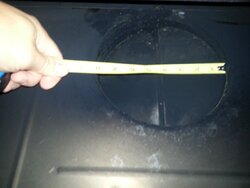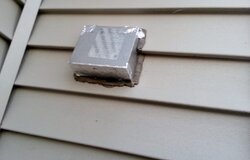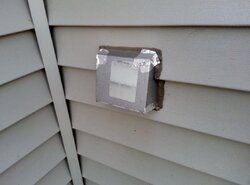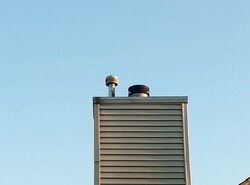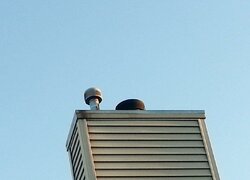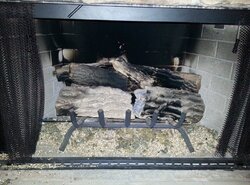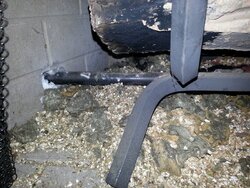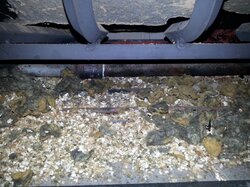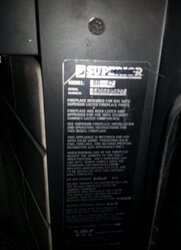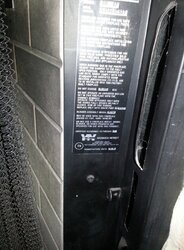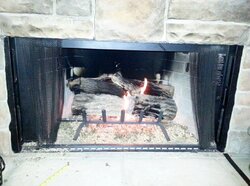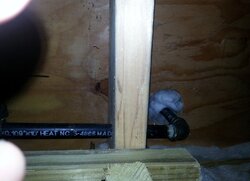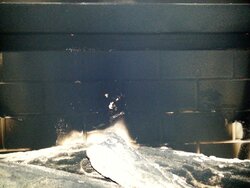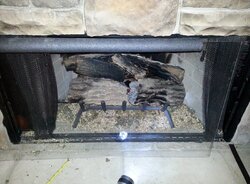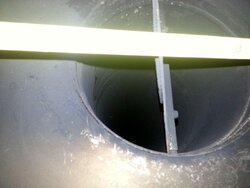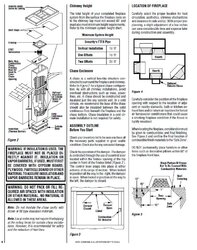- Sep 26, 2013
- 16
I am hoping someone might be able to help me with our current fireplace. We have the BR-42 which was installed by our builder approximately 7 years ago. Since then, our builder has gone bankrupt so there is no possibility of contacting them directly. We also have no idea who was contracted to do the install. This fireplace box is vented to the outside (directly to the right of the fireplace box; small silver box outside at knee level). From what I've seen I believe online I believe we might have a FOAK combustion kit. A gas log system (Mendocino Oak logs manufactured by FMI products for a vented system...purchased at Menards) was also installed at a later date (the fireplace was originally setup for wood with a gas start). The fireplace is located on the north wall of our house in our family. This family is approximately 25' x 20' with vaulted ceilings. The family room opens up into our kitchen area. The problem we are having is two-fold.
First, a great amount of cold air seems to be entering through the fireplace. This occurs with the flue is closed. On a number of very cold mornings we have awoke to find white frost covering the vents on either side of the fireplace box and up the chimney column and flue (I have pictures). A noticeable draft can be felt entering through these same vents. We have pulled all the siding off the house and insulated (per the installation directions) around the firebox up approximately 12'. We have also noticed that the draft isn't as bad if the combustion air intake is covered (the lever on the face of the box to close the vent doesn't seem to work properly so we have sealed the outside intake with ducting tape). We also use a piece of plexi-glass cut to the size of the opening to seal when the fireplace isn't in use.
Secondly, the fireplace throws off very little heat when the gas is on. Unless I am sitting within a couple of feet of the box, I feel absolutely no heat.
We would like to buy an insert for the fireplace to make it more efficient but it is not possible financially for the coming winter. We also do not want to spend money having someone come out to do repairs or modifications. We know a fireplace isn't overly efficient but our case seems extreme. We are looking for tips/advice on how to improve what we have. Anyway, I have the following questions:
1. Is there anyway to "repair" the lever on the face of the firebox that opens and closes the combustion air vent? I think something maybe bent inside but I don't know how to get to it. The firebox is surrounded by stone. By taping the vent closed permanently , how are we affecting the heat output of the fireplace?
2. Is there anyway to increase the heat output of the fireplace? Would converting back to wood burning help? Other family members have fireplaces with gas logs and they emit A LOT more heat.
3. Would adding glass doors help much?
4. Any other advice /tips/insight that might help us?
/tips/insight that might help us?
Thanks in advance for your help!
First, a great amount of cold air seems to be entering through the fireplace. This occurs with the flue is closed. On a number of very cold mornings we have awoke to find white frost covering the vents on either side of the fireplace box and up the chimney column and flue (I have pictures). A noticeable draft can be felt entering through these same vents. We have pulled all the siding off the house and insulated (per the installation directions) around the firebox up approximately 12'. We have also noticed that the draft isn't as bad if the combustion air intake is covered (the lever on the face of the box to close the vent doesn't seem to work properly so we have sealed the outside intake with ducting tape). We also use a piece of plexi-glass cut to the size of the opening to seal when the fireplace isn't in use.
Secondly, the fireplace throws off very little heat when the gas is on. Unless I am sitting within a couple of feet of the box, I feel absolutely no heat.
We would like to buy an insert for the fireplace to make it more efficient but it is not possible financially for the coming winter. We also do not want to spend money having someone come out to do repairs or modifications. We know a fireplace isn't overly efficient but our case seems extreme. We are looking for tips/advice on how to improve what we have. Anyway, I have the following questions:
1. Is there anyway to "repair" the lever on the face of the firebox that opens and closes the combustion air vent? I think something maybe bent inside but I don't know how to get to it. The firebox is surrounded by stone. By taping the vent closed permanently , how are we affecting the heat output of the fireplace?
2. Is there anyway to increase the heat output of the fireplace? Would converting back to wood burning help? Other family members have fireplaces with gas logs and they emit A LOT more heat.
3. Would adding glass doors help much?
4. Any other advice
Thanks in advance for your help!


